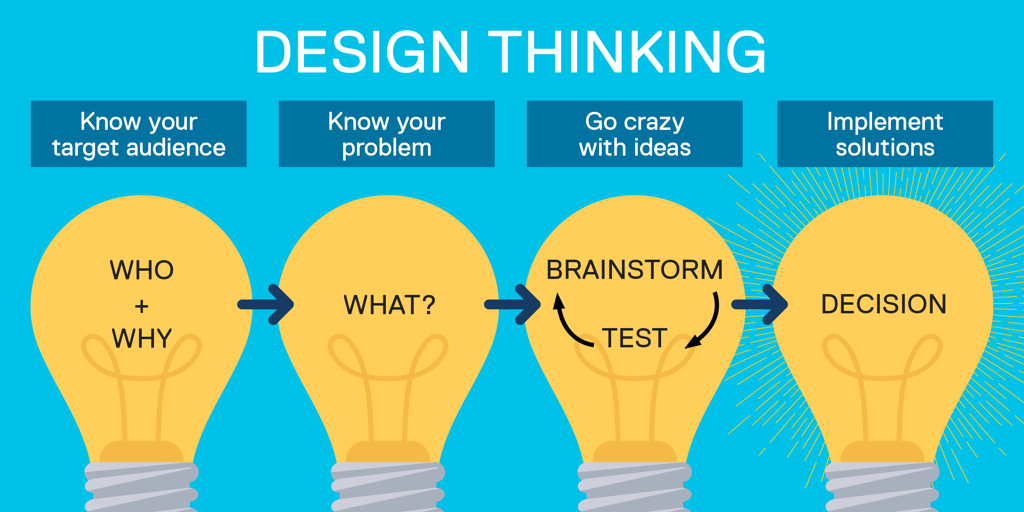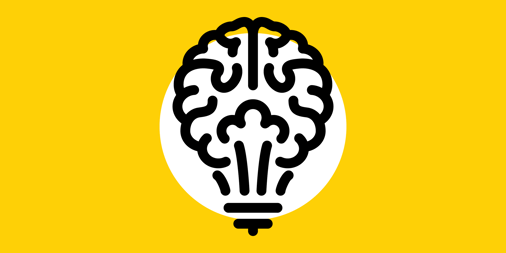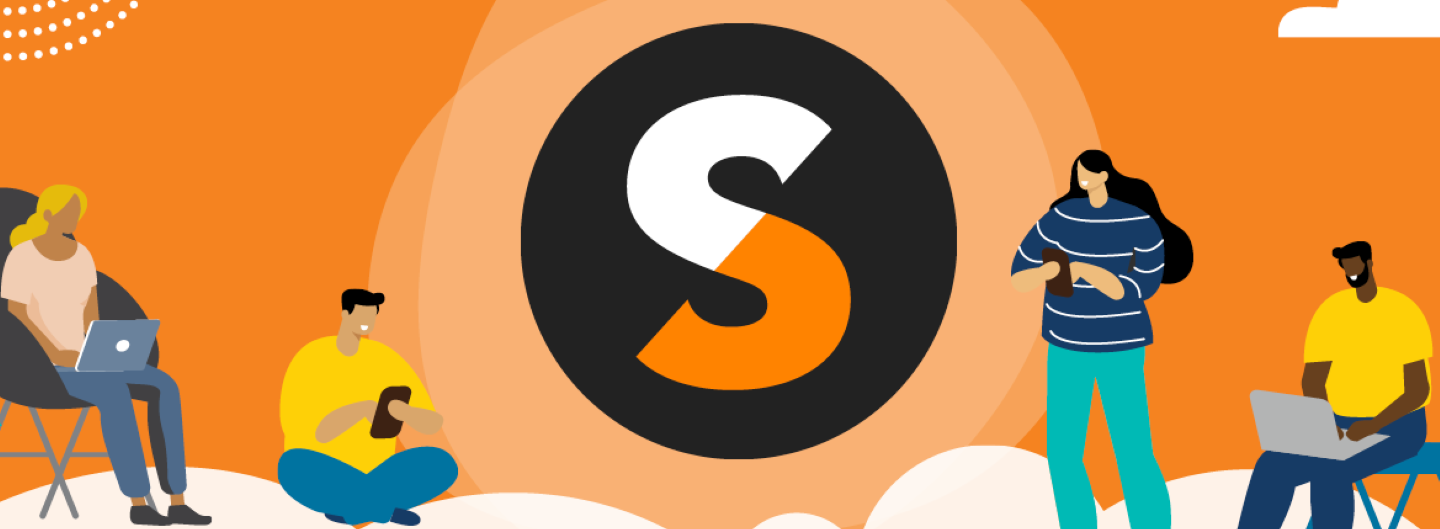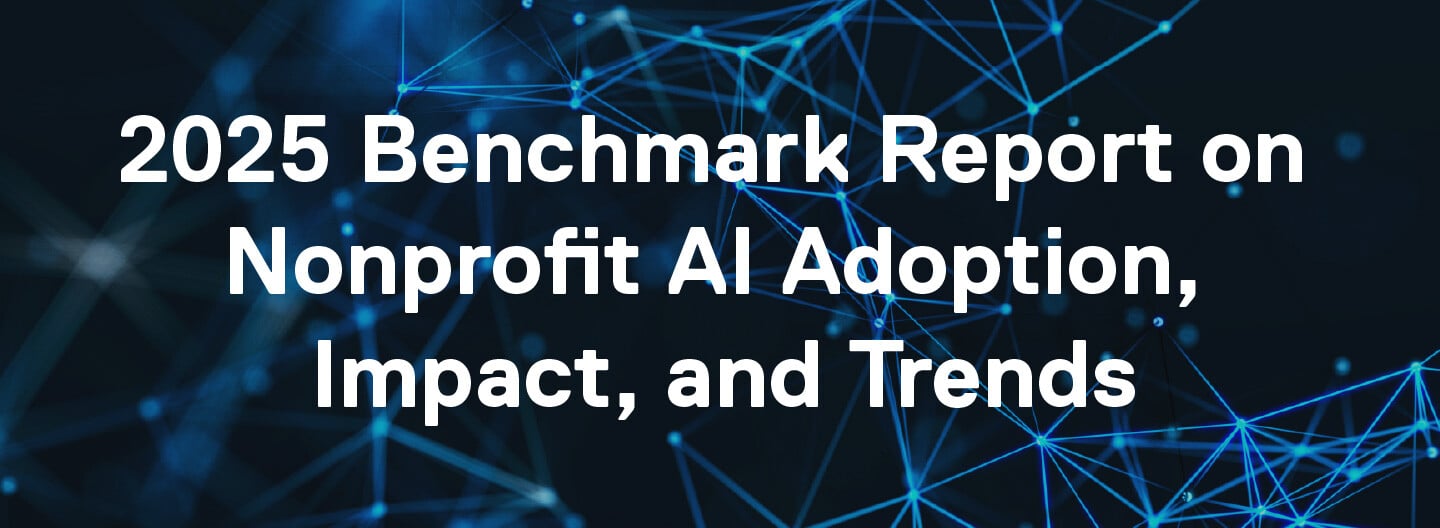Solving problems is a large part of what nonprofits do every day across the world. From poverty to hunger to curing fatal disease, nonprofits are professionals at finding solutions. In crafting solutions, many nonprofits could benefit from a design thinking approach.
In order to learn more about this innovative way of thinking, TechSoup caught up with Adhithya Ramakumar, an expert in design thinking. He's a product designer for Cisco Umbrella (an enterprise security product), who has a master's degree in human-computer interaction design from Indiana University.
He uses design thinking every day to address complex user-interface problems, but he believes that many nonprofits can benefit from employing this method of problem solving as well.
What Is Design Thinking?

Perhaps what's most confusing about design thinking is the word design itself. Although rooted in strategies actual designers use when making software, products, or buildings, the term is used more broadly in this case.
"All of us have designed something or the other at some point in our lives. We are all designers in some way," Adhithya says. "If you have a problem, and you think you have a solution that addresses that problem to its core, you are essentially designing a solution. It's as simple as that."
So, the first step in understanding design thinking is to realize that you are probably already doing it.
"The key element of doing this is taking a very user-centered approach. It's a human-centered approach, because at the end of the day, you are designing for humans," Adhithya says.
Instead of thinking about a problem only in terms of the desired outcome, design thinking focuses on the people affected in each stage of their experience.
Let's say you run an after-school program and you are seeing an increase in behavior problems during your activities. Looking at this problem through a design-thinking lens puts the children in the program and their experiences at the forefront of your approach to solving your issue of a rowdy classroom.
Let's take a look at how Adhithya might approach this problem.
Put Human Experiences First
 "The first and most important thing to understand is who you're a designer for," Adhithya says. "And the first thing I do when I'm finding this out is ask 'why?' at least five times. That's a good rule of thumb."
"The first and most important thing to understand is who you're a designer for," Adhithya says. "And the first thing I do when I'm finding this out is ask 'why?' at least five times. That's a good rule of thumb."
It's important to not just solve for the perceived problem itself — in our case it's an unruly group of kids — but to ask why the students are acting this way. If the answer is that the curriculum no longer grabs students' interests, he'd once again ask why that's the case. And so on, until he gets closer to the root of the problem.
He also says that it's important to not take your questioning too far, as it can often reveal systemic issues beyond your control. For example, if the actual root cause of the misbehavior is an underfunded school district, that might be something beyond your immediate scope of influence.
"It helps to understand the limits of what's in your reach in solving the problem and allows you to see the pain points. In other words, completely understanding your user base is the first step," Adhithya says. "It seems like a no-brainer, but I don't think many of us spend enough time in this discovery phase of understanding our target audiences really well. It's important to establish a sense of empathy for whom you are designing."
Know Your Problem
"Once I have a basic sense of the root cause of a problem and for whom I'm designing a solution, knowing the problem itself in its entirety is what comes next," Adhithya says. "Once I understand my users, I can understand their problems. I know their pain points to a certain extent, and I can propose solutions. I understand the who and the why; now I look at the what."
Let's go back to your after-school program. You've determined that the material no longer holds students' attention. After digging a bit deeper, you learn that this is because the curriculum doesn't connect with the interests of this year's group of children. You have now identified the root cause of your initial problem, which was behavior. Rather than ramping up your discipline efforts, you've taken a step back to realize what your target audience — the children — are experiencing.
Go Crazy with Ideas
Once you've decided the root cause of your problem, it's time to start coming up with solutions. In formal design-thinking terminology, this is called "ideating," but it's really just free-form, rapid-fire brainstorming.
"Go crazy with ideas," Adhithya says. "Don't stop with the first idea that you have. Never. The first idea you have in mind might be the best one, and you might come back to it, but it's good to have as many ideas as possible."
He says no ideas are too crazy, and it's OK to shoot for "blue sky," meaning the best solution available in a perfect world, without any constraints.
"That crazy idea might spark another idea within someone else that is more feasible. It's a very collaborative effort, and you should have as many ideas as possible," Adhithya says.
He also points out that these ideas should be iterative in nature, which means that each new idea should try to build upon the last one.
In our case, you are brainstorming all the cool and interesting things you could do in this after-school program. Each time, you take what you've already learned about the students into account — remember, everything in design thinking comes back to human experience.
Perhaps you've learned that a new skate park was recently built near the school, and that's all the kids are thinking about. After many ideas, you decide to create a program in which kids learn to silk-screen their own designs on skateboards.
Test Your Ideas
Now it's time for the final part of the ideation process: testing your ideas.
"How do you know if something is going to work or not? You need to put it out there, test it, and learn from your mistakes. You then iterate on what you've put out there," Adhithya says.
Let's say the group didn't like making art, since they are more of a physical bunch. You try some more ideas, and you end up creating a skateboarding club. The kids become engaged, their problematic behavior dies down, and you've effectively addressed the problem you were trying to solve in the first place, all thanks to design thinking.
Of course, not every nonprofit is operating an after-school program. But it's easy to see how this structured way of thinking can be applied to a variety of situations. Adhithya also says that those who are interested in fully adopting design thinking as a practice should access resources online (we've listed a few of them below). He also suggested looking into courses on design thinking.
At the very least, design thinking is a fascinating way to go about problem solving. It just might be the extra push your nonprofit needs to take your impact to the next level.
Design Thinking for Nonprofits: Additional Resources
- A Virtual Crash Course in Design Thinking
- Design Thinking (IDEO)
- The Design Sprint
- Design Thinking for Educators
Other Future of Work Ideas for Nonprofits
Want to learn more about other innovative technology and ways of incorporating them into your nonprofit? Check out the latest in chatbot technology:







